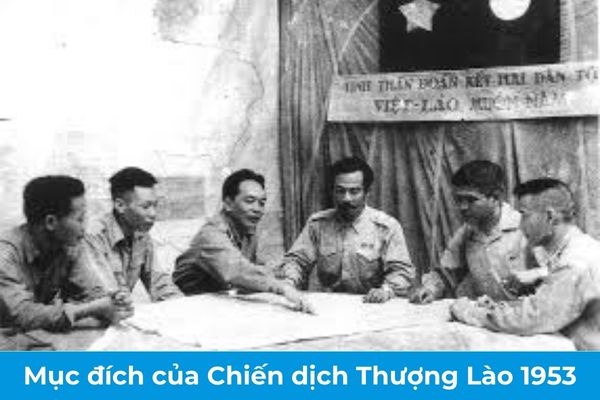Vietnam: What was the purpose of the Upper Laos Campaign in 1953? What do the national defense and security education contents to be integrated for lower secondary school students include?
What was the purpose of the Upper Laos Campaign in 1953?
The Upper Laos Campaign in 1953 was a major military campaign conducted by the Vietnam-Laos allied forces to destroy a segment of the French expeditionary forces, and expand, and consolidate the liberated areas in Upper Laos, particularly the Sam Neua region.
The Upper Laos Campaign in 1953 held strategic significance in military, political, and diplomatic terms, with many important goals aimed at decisively influencing the outcome of the war against French colonial forces on the Indochina battlefield.
- Destroy enemy forces: Attack the French expeditionary army and Laotian puppet forces to weaken the opponent's strength on the Indochina battlefield.
- Support the Laotian people: Motivate and encourage the Laotian people to unite and participate in the resistance movement alongside the Vietnamese people against French colonialism.
- Expand and consolidate the liberated areas: Assist Laos in expanding the revolutionary areas, building a solid base to serve as a springboard for subsequent campaigns.
- Strengthen Vietnam-Laos solidarity: Enhance military coordination between the two countries and affirm the unity in the struggle against a common enemy.
The Upper Laos Campaign was not only a military victory but also a symbolic event in the special international relations between Vietnam and Laos. The campaign's objectives—from destroying the enemy, supporting the allied country, and expanding liberated areas to strengthen the solidarity between the two nations—were all aimed at the joint struggle for independence, freedom, and sovereignty of the two peoples on the Indochina Peninsula.
Note: The content is for reference purposes only.

What was the purpose of the Upper Laos Campaign in 1953? What do the national defense and security education contents to be integrated for lower secondary school students in Vietnam include? (Image from the Internet)
What do the national defense and security education contents to be integrated for lower secondary school students in Vietnam include?
Under point b, clause 2, Article 3 of Circular 08/2024/TT-BGDDT, the national defense and security education contents to be integrated for lower secondary school students in Vietnam are specified as follows:
- Integration in subjects and educational activities for each class, according to textbooks chosen by schools, suitable with the perception ability of students in each locality, focusing on subjects: Literature; Civic Education; History and Geography; Arts (Music, Fine Arts); Local education content; Experiential activities, career orientation.
- Common integrated themes from grade 6 to grade 9: educate the spirit of solidarity, and patriotism of the Vietnamese nation in building and defending the country through historical periods; protecting the sovereignty of the seas and islands; safeguarding sovereignty, territory, and national borders; citizen rights and responsibilities in the cause of nation-building and defense; introduce some historical events against foreign invaders; some contents about protecting personal information when participating in social networks; introduce some contents on social evil prevention for students; State religious policies.
- Integrated themes by each grade:
+ Grade 6: introduction to the history and traditions of the Vietnam People's Army and Vietnam People's Public Security; historical sites associated with the struggles against foreign invaders; the intelligent and creative methods of our army and people in uprisings against invaders.
+ Grade 7: introduction to activities and images supporting the protection of Vietnam's maritime and island sovereignty; some content on protecting personal information when participating in social networks; freedom of belief and religion as regulated by law.
+ Grade 8: education on national pride and dignity and the strength of national unity in the struggle against foreign invaders; introduction to some border markers; the impact of social evils on all aspects of social life; students' responsibility in preventing school violence.
+ Grade 9: consequences of invasive wars on the Vietnamese nation; some images of economic, and social development and ensuring national defense and security; introduction to some songs celebrating the glorious tradition of the Vietnam People's Army and Vietnam People's Public Security; students' responsibility in contributing to and defending the nation.
What learning outcomes regarding national defense and security education contents are required for lower secondary school students in Vietnam?
Under point b, clause 2, Article 5 of Circular 08/2024/TT-BGDDT, learning outcomes regarding the national defense and security education contents required for lower secondary school students in Vietnam are as follows:
- Understanding the tradition of resisting foreign aggressors of the nation through historical periods of building and defending the country; traditions of the Vietnam People's Army, Vietnam People's Public Security, and the Militia and Self-Defense Forces; sovereignty of territory, seas, islands, and national border security; some basic contents in the movement for national security protection.
- Developing a basic awareness of national defense and security, and students' responsibilities in defending the nation and maintaining security, order, and social safety.
- Fostering national pride and dignity, patriotism, love for compatriots, a sense of discipline, solidarity, and adherence to legal regulations.

